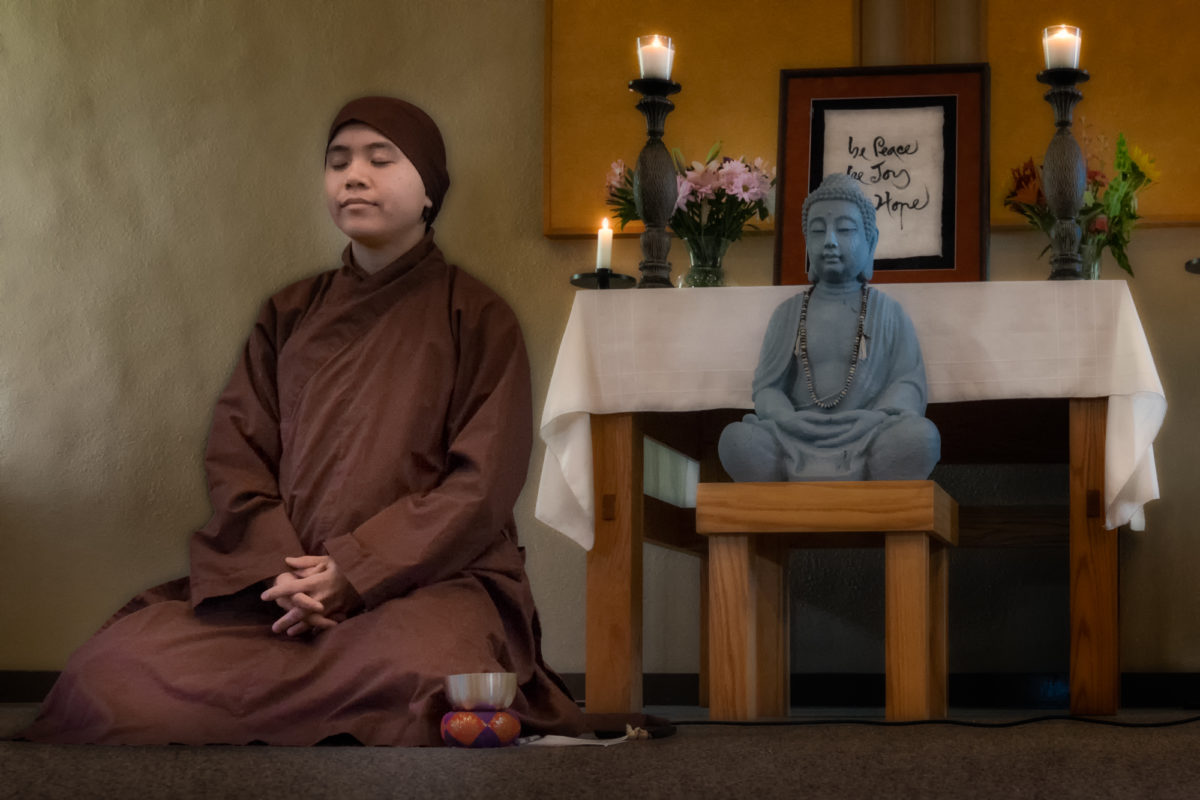By Jack Lawlor

Relax!
Practice mouth yoga (smile!) and assume a comfortable posture with the upper back straight, shoulders relaxed, chin tucked in, and eyes half open and out of focus.
Enjoy a gentle cleansing breath and come into contact with the full capacity of the lungs. Be curious and find a place where you can sense and feel the experience of your inhalations and exhalations,
By Jack Lawlor

Relax!
Practice mouth yoga (smile!) and assume a comfortable posture with the upper back straight, shoulders relaxed, chin tucked in, and eyes half open and out of focus.
Enjoy a gentle cleansing breath and come into contact with the full capacity of the lungs. Be curious and find a place where you can sense and feel the experience of your inhalations and exhalations, either in the lining of the nose, on the lips, or in the diaphragm area between the lungs and the stomach.
At that point of contact, enjoy these exercises without rushing:
Sense and feel each inhalation and exhalation in a tactile way without trying to influence the length, depth, or rhythm of the breath. Gently say “Sensing, feeling” to yourself, silently, with each inhalation (“Sensing”) and exhalation (“Feeling”).
Gently touch the breath with your attention, merging your attention into the breath. Gently say “Touching, merging” to yourself, silently, with each inhalation (“Touching”) and exhalation (“Merging”).
Be aware of the length of each inhalation, and be alert to the length of each exhalation. Gently say “Aware, alert” to yourself, silently, with each inhalation (“Aware”) and exhalation (“Alert”).
Smile to each distraction, returning to the breath. Gently say “Smiling, returning” to yourself silently, with each inhalation (“Smiling”) and exhalation (“Returning”).
If you have persistent distractions:
Smile to them.
Breathe in and out through them.
Pay bare attention to them.
Respond with curiosity, silently asking, “What is this?”
Wordlessly observe what is giving rise to them, what is feeding them, how long they remain stable, and how they change, fade, and turn into something else.
Return to the practice of mindful breathing.
Once centered in the breath, while continuing breath practice:
Practice insight meditation into what is arising, abiding, transforming, and fading away in the body. Do an organized body scan, paying bare attention to whatever sensations arise anywhere in the body.
Practice insight meditation into what is arising, abiding, transforming, and fading away in your emotions and feelings. Note how feelings are influenced by the body’s condition (especially weariness) and by what you are thinking.
Practice insight meditation into what is arising, abiding, transforming, and fading away in your mind. Note how your thinking is influenced by the condition of the body and emotions. Notice any emotional hijacking that occurs from craving, anger, and misperceptions.
Finish by enjoying just sitting! Following the breath, let go of everything else.

